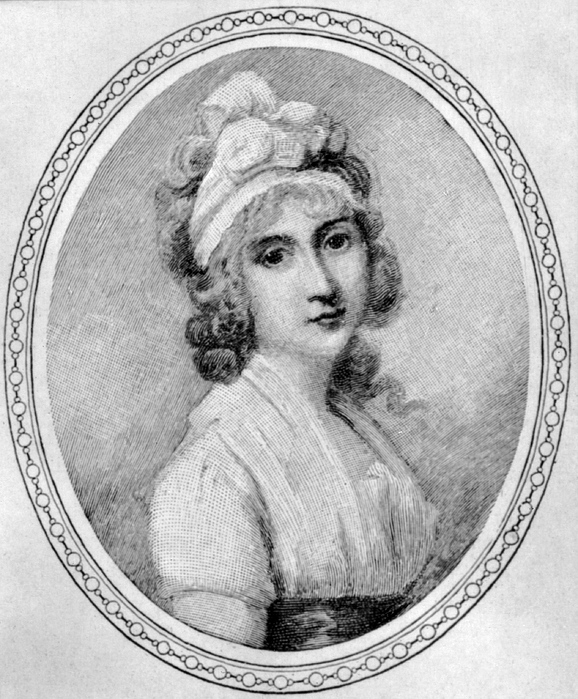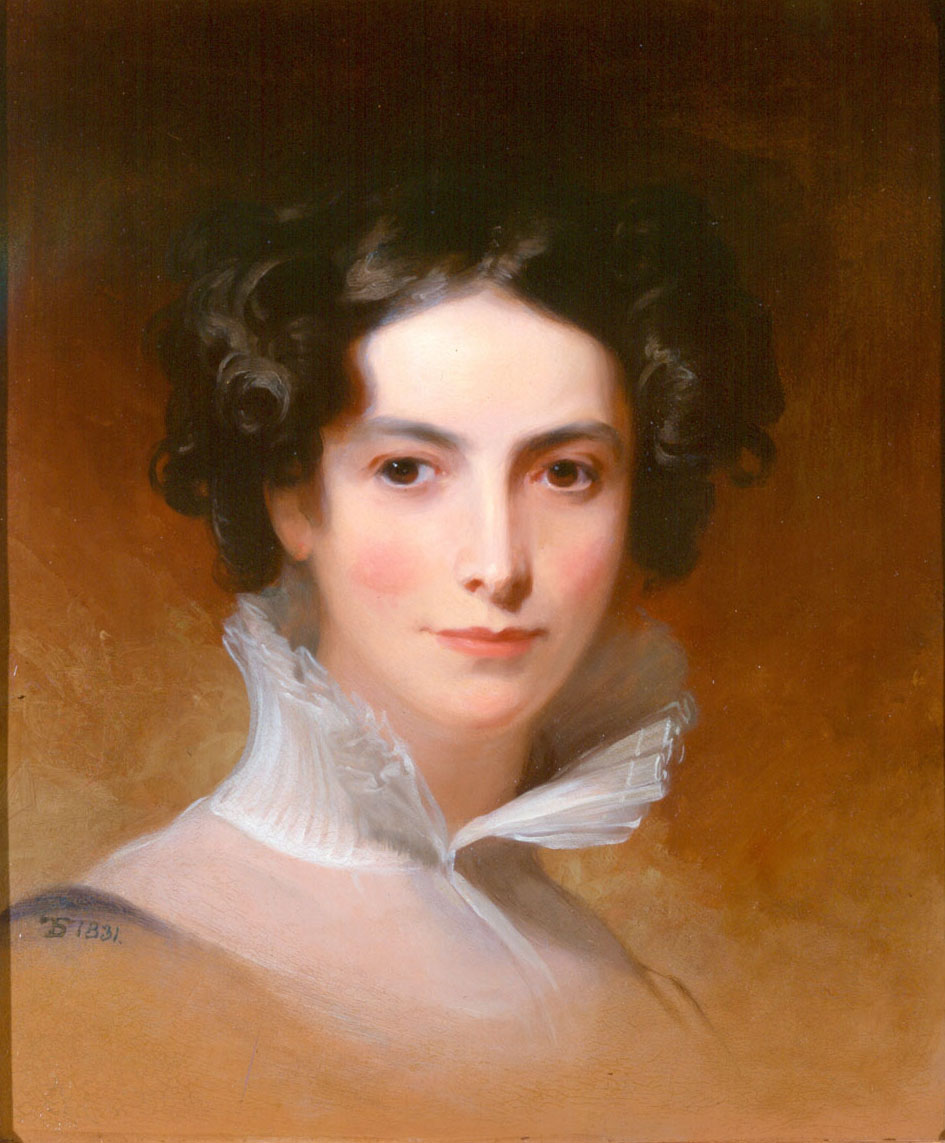Editor's Note
This is the sixth in a series of guest posts by Rebecca Brenner, a doctoral candidate (ABD) in early American history at American University in Washington, DC. She has served as Secretary of the Society for US Intellectual History since June 2017.
At the 2018 Society for Historians of the Early American Republic annual meeting in Cleveland, Ohio, I practically counted down the hours until the Saturday morning roundtable on early American women’s intellectual history. It did not disappoint. Rosemarie Zagarri, Professor of History at George Mason University and author of Revolutionary Backlash,A Women’s Dilemma, and The Politics of Sizeamong other works, presided.[1]Panelists were Sara Georgini, Editor of the Adams Papers at Massachusetts Historical Society; Tom Cutterham, Lecturer at University of Birmingham; Lucia McMahon, Associate Professor at William Paterson University; and Sarah Pearsall, Senior Lecturer at University of Cambridge. These panelists kept the audience on the edge of their seats by never reaching a consensus. Despite Cutterham’s insistence that historians should not treat women who thought and wrote as novelties, Georgini’s definition that intellectual history equals “ideas in action” drove the roundtable to make room for the rich intellectual history of women in the early American republic.

Print after a painting of Angelica Church by Richard Cosway, circa 1790, Wikimedia Commons
Some panelists, particularly Georgini and Zagarri, argued that considering the limitations that women confronted in early American society, we should adjust our definition of intellectual history. To cite some obvious limitations, women could not vote, it was extraordinarily difficult for them to publish, many women could not receive an education, enslaved women could not read without breaking the law – But of course, they had ideas, and one possible definition of intellectual history is using ideas and publications as the agents in the historical narrative. Georgini put forth a more concise definition: “Ideas in action.” She mentioned material culture as a possible approach to the intellectual history of women who did not leave textual evidence. Of course, material culture is especially successful at public history sites.
At the same time, women historic figures are not necessarily intellectuals just because they were smart. For example, Tom Cutterham is currently writing his second book on Angelica Schuyler Church, who read and wrote voraciously and also happened to be Alexander Hamilton’s sister-in-law. During the roundtable, Cutterham suggested that Church’s story ought not to count as intellectual history because finding curious, smart women in the historical record should be commonplace. His co-panelists pushed back, citing the significant obstacles that early American women overcame to spur ideas in action. Needless to say, these panelists interrogated central, defining questions of the field of US intellectual history.

Painting of Rebecca Gratz by Thomas Sully, 1831, Wikimedia Commons
Prior to this panel, I had planned to write a blog post arguing that Rebecca Gratz, an early American Jewish woman, was an intellectual and that her story should be prominent in early American intellectual history. Gratz socialized among the elites of antebellum Philadelphia society, pioneered Sunday schools for Jewish children, founded the first American Jewish women’s philanthropic society, and wrote hundreds of letters. The foremost historian of Gratz, Dianne C. Ashton, writes: “Gratz’s life shows us a Jewish woman… alienated from political power. Her response was to fill the content of her Jewish ethnic identity with a Judaized version of the spiritual, domestic piety common among Christian women of her class. Her gender had determined… the intellectual choices available to her, and the sorts of activities and networks she could use.”[1] Essentially, Gratz simultaneously reconceptualized American Judaism and American womanhood in the early republic and adapted existing structures to institute change. Though less formally intellectual than her friend Isaac Leeser who published a national Jewish newspaper, Gratz wrote extensively and put ideas into action. By Sara Georgini’s definition, Gratz is indeed an early American Jewish intellectual. But arguably by Tom Cutterham’s definition, Gratz is an early American Jewish woman, a smart one and an influential one, but not necessarily part of intellectual history.
Where does that leave us? Should all women who put ideas into action count as women’s intellectual history? Does calling a woman in the historical record “intellectual” only because she was smart come across as being shocked that a woman displayed intelligence? This excellent panel did not answer conclusively, but it did illuminate key questions in the fields of women’s history, intellectual history, and their overlap.
_________________________
[1]Dianne C. Ashton, Rebecca Gratz and the Domestication of American Judaism(Ann Arbor, MI: University Microfilms International Dissertation Information Service, PhD Dissertation 1986) xx; Also see: Rebecca Gratz: Women and Judaism in Antebellum America (Wayne State University Press, 1997).
[1]Rosemarie Zagarri, Women and Politics in the Early American Republic (University of Pennsylvania Press, 2007); A Woman’s Dilemma: Mercy Otis Warren and the American Revolution (Wheeling, IL: Harlan-Davidson, Inc., 1995); The Politics of Size: Representation in the United States, 1776-1850 (Cornell University Press, 1987).

One Thought on this Post
S-USIH Comment Policy
We ask that those who participate in the discussions generated in the Comments section do so with the same decorum as they would in any other academic setting or context. Since the USIH bloggers write under our real names, we would prefer that our commenters also identify themselves by their real name. As our primary goal is to stimulate and engage in fruitful and productive discussion, ad hominem attacks (personal or professional), unnecessary insults, and/or mean-spiritedness have no place in the USIH Blog’s Comments section. Therefore, we reserve the right to remove any comments that contain any of the above and/or are not intended to further the discussion of the topic of the post. We welcome suggestions for corrections to any of our posts. As the official blog of the Society of US Intellectual History, we hope to foster a diverse community of scholars and readers who engage with one another in discussions of US intellectual history, broadly understood.
This is great, Rebecca! Thank you for reporting on the panel–it sounds like it was a very stimulating event!
Not having been able to hear Cutterham’s full argument–and I’m not asking you to speak for him–I still must say that I am less than compelled by the way he frames what is and what is not intellectual history. If, as you’ve paraphrased his argument, Angelica Schuyler Church’s “story ought not to count as intellectual history because finding curious, smart women in the historical record should be commonplace,” then does that mean that intellectual history has to steer clear of the ordinary? Intellectual history, for Cutterham, must be restricted to the rare, the exceptional?
That seems to be the point that Sara Georgini is refuting by defining intellectual history as the study of “ideas in action”–the rarity or commonness of an idea is not the variable we should be selecting on. And that makes much more sense to me. I don’t really see where the basis of Cutterham’s argument lies–what the principle is that would uphold his definition of intellectual history as the study of uncommon ideas.